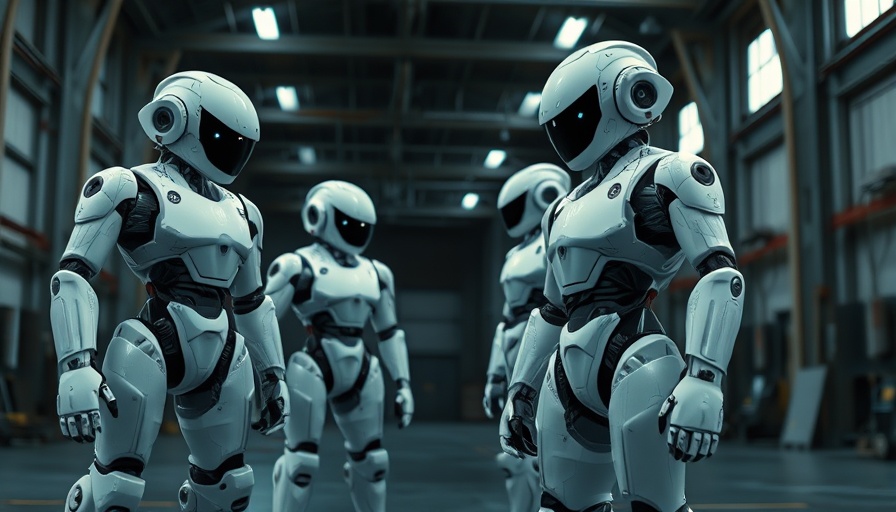
How Faceless Robots Are Shaping the Future of Work
As we move deeper into the 21st century, the workplace is experiencing a silent revolution driven by technology. Faceless robots, designed not to mimic human appearance but to enhance productivity, are redefining industries around the globe. In 2024, India witnessed a remarkable 59% increase in industrial robot installations, highlighting how pivotal these machines have become in modern operations.
The Rise of the Invisible Workforce
Traditionally, many envision robots as humanoid figures, but the reality is quite different. Today's industrial robots come in various forms, including articulated robotic arms and collaborative robots (cobots). Their design prioritizes function over aesthetics, making them vital assets in factories and warehouses. According to reports, the global market for industrial robotics is expected to surge from $87.1 billion in 2024 to a staggering $162.7 billion by 2030, with cobots at the forefront of this growth, expected to grow at a projected CAGR exceeding 31.6% between 2025 and 2030.
Addressing Labor Shortages and Boosting Resilience
With businesses worldwide facing labor shortages, these robots are stepping up to fill the gaps. Their advanced capabilities in AI, vision systems, and movement enable them to perform complex tasks and adapt to dynamic environments. In countries like South Korea and China, the adoption rate is impressive, with South Korea boasting more than 1,000 robots per 10,000 manufacturing workers. The robust performance of these machines demonstrates their value in enhancing supply chain resilience and operational efficiency, proving that the future of work might just be faceless.
AI and Advanced Technologies: The Game Changers
AI is at the heart of this transformation. Modern robots equipped with machine learning algorithms and vision systems can navigate unpredictable environments using techniques such as simultaneous localization and mapping (SLAM). These capabilities allow robots not only to perform repetitious tasks but also to adjust to variations in their surroundings, making them invaluable in sectors ranging from manufacturing to healthcare and logistics.
Counterarguments: The Human Element at Risk
As the debate around automation heats up, some express concerns over job losses due to the rise of robotic automation. Critics argue that while industry efficiency may increase, the human touch in various sectors is irreplaceable. This perspective emphasizes the importance of finding a balance between leveraging robotic technology and ensuring that human workers are not left behind. Preparing current and future generations for this technological evolution is essential in addressing such concerns.
Future Predictions: Adapting to Change
As we look ahead, the question remains: how can businesses integrate robots while ensuring employees adapt to this new landscape? Training on working alongside robots and understanding their functionalities will become critical. Companies must foster a culture where humans and robots can collaborate effectively, utilizing each group's strengths for overall productivity.
Practical Tips for Engaging with Robots in the Workspace
For organizations ready to embrace these changes, here are a few strategies: 1) Invest in training programs for employees to build a better understanding of how to work alongside robots, 2) Encourage open discussions about the role of these technologies to ease concerns, and 3) Track the impact of automation on productivity and morale, adjusting approaches as necessary.
Conclusion
Faceless robots are not merely tools; they are partners in the evolving workplace. As industries continue to adapt, recognizing the importance of this partnership will be crucial. Understanding the value of robots and how they enhance human capabilities can lead to a more productive future. The workplace is changing fast, and embracing this change is not just an option; it’s necessary for survival and growth.
 Add Row
Add Row  Add
Add 




 Add Row
Add Row  Add
Add 

Write A Comment